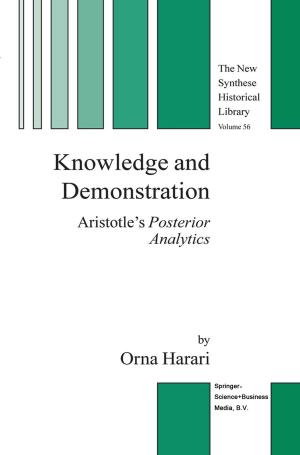Coronary Angioplasty: A Controlled Model for Ischemia
Nonfiction, Health & Well Being, Medical, Specialties, Internal Medicine, Cardiology| Author: | ISBN: | 9789400942950 | |
| Publisher: | Springer Netherlands | Publication: | December 6, 2012 |
| Imprint: | Springer | Language: | English |
| Author: | |
| ISBN: | 9789400942950 |
| Publisher: | Springer Netherlands |
| Publication: | December 6, 2012 |
| Imprint: | Springer |
| Language: | English |
Since the introduction of coronary angioplasty in 1977, this procedure has gained a steadily increasing position in the treatment of coronary artery obstmction. From the available evidence it can be estimated, that this thera peutic tool will get even more additional momentum of many ten-thousands of patients to be treated in the next few years, due to a growing fraction of patients who are candidates for this intervention. Information about the indications, benefits and risks of coronary angioplasty is accumulating rapidly in addition to publications about refinements of the technique itself. Recently, a number of investigators have realized that coronary angioplasty is not only a therapeutic tool, but can, during the procedure, be used as a source of diagnostic information. When the catheter is placed in a coronary artery obstruction, inflation of the balloon produces transient myocardial ischemia. Before, during, and after this period of severe ischemia, studies of the perfor mance of the myocardium at risk can be carried out. The fact that therapeutic coronary angioplasty is carried out in a cardiac catheterization laboratory which is by definition optimally equipped for the measurement of hemodynamic parameters, has probably also contributed to the effectuation of these investigations. The combination of hemodynamic and biochemical parameters with morphological information from the coronary angiogram can be utilized for the quantification of myocardial involvement and the success of coronary dilatation with angioplasty. Studies of interactions with pharmacological substances are also feasible and informative.
Since the introduction of coronary angioplasty in 1977, this procedure has gained a steadily increasing position in the treatment of coronary artery obstmction. From the available evidence it can be estimated, that this thera peutic tool will get even more additional momentum of many ten-thousands of patients to be treated in the next few years, due to a growing fraction of patients who are candidates for this intervention. Information about the indications, benefits and risks of coronary angioplasty is accumulating rapidly in addition to publications about refinements of the technique itself. Recently, a number of investigators have realized that coronary angioplasty is not only a therapeutic tool, but can, during the procedure, be used as a source of diagnostic information. When the catheter is placed in a coronary artery obstruction, inflation of the balloon produces transient myocardial ischemia. Before, during, and after this period of severe ischemia, studies of the perfor mance of the myocardium at risk can be carried out. The fact that therapeutic coronary angioplasty is carried out in a cardiac catheterization laboratory which is by definition optimally equipped for the measurement of hemodynamic parameters, has probably also contributed to the effectuation of these investigations. The combination of hemodynamic and biochemical parameters with morphological information from the coronary angiogram can be utilized for the quantification of myocardial involvement and the success of coronary dilatation with angioplasty. Studies of interactions with pharmacological substances are also feasible and informative.















